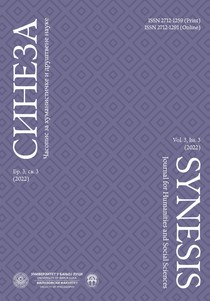Квалитет аналогија које студенти спонтано генеришу у педагошкој ситуацији
Quality of analogies that students generally generate in a pedagogical situation
Author(s): Zlatko M. PavlovićSubject(s): Pedagogy
Published by: Filozofski fakultet, Univerzitet u Banjoj Luci
Keywords: analogies; spontaneous use of analogies; effective use of analogies;
Summary/Abstract: Analogies are one of the tools that can increase the quality of a teacher’s work. In order to use analogies in teaching in an efficient way, it is necessary to train teachers for their application. Since such training is generally lacking, teachers use analogies spontaneously and in accordance with their intuitive notions of when and how they can and should be applied. In this paper, we consider some problems of spontaneous use of analogy. The paper presents the results of two surveys on student samples (150 and 305 respondents, respectively). In the first survey sample, there were students who were trained for the teaching profession, and in the second survey sample, some were trained for the teaching profession, and some were not. Their tendency to spontaneously apply analogies in a pedagogical situation (a situation in which they are asked to explain the meaning of certain terms to a child) was measured, as well as the quality of the analogies they applied. Quality was assessed by whether or not they indicated similarities and differences between analogs in the applied analogies. We started from the assumption that analogies without explaining similarities and differences will dominate over analogies in which such an explanation is present and that pointing out similarities and pointing out differences between analogs will be approximately equally represented. The assumption that analogies without explaining similarities and differences will dominate is confirmed. The results suggest that a significant number of respondents show intuitive sensitivity to the conditions of effective application of analogies, but this sensitivity is much more related to the awareness of the need to explain similarities than to explain differences. Also, the results suggest that professional training for the teaching profession, to some extent, contributes to improving the competence of future teachers for the effective application of analogies. In our research, we got results that show that students who have prepared for the teaching profession and who have progressed further in that preparation (more years of study) use analogies in a more efficient way. Students who prepared for the teaching profession pointed out the differences between analogs significantly more often, and older students pointed out similarities explicitly more often.
Journal: Sineza
- Issue Year: 3/2022
- Issue No: 3
- Page Range: 107-123
- Page Count: 17
- Language: Serbian

